Prawn farming has importance in the fisheries industry. This farming business does not require much capital and also land. The increase in shrimp production has resulted in an intensification of production, which causes an increased incidence of diseases. Diseases are a major constraint to the sustainability of the shrimp production industry.
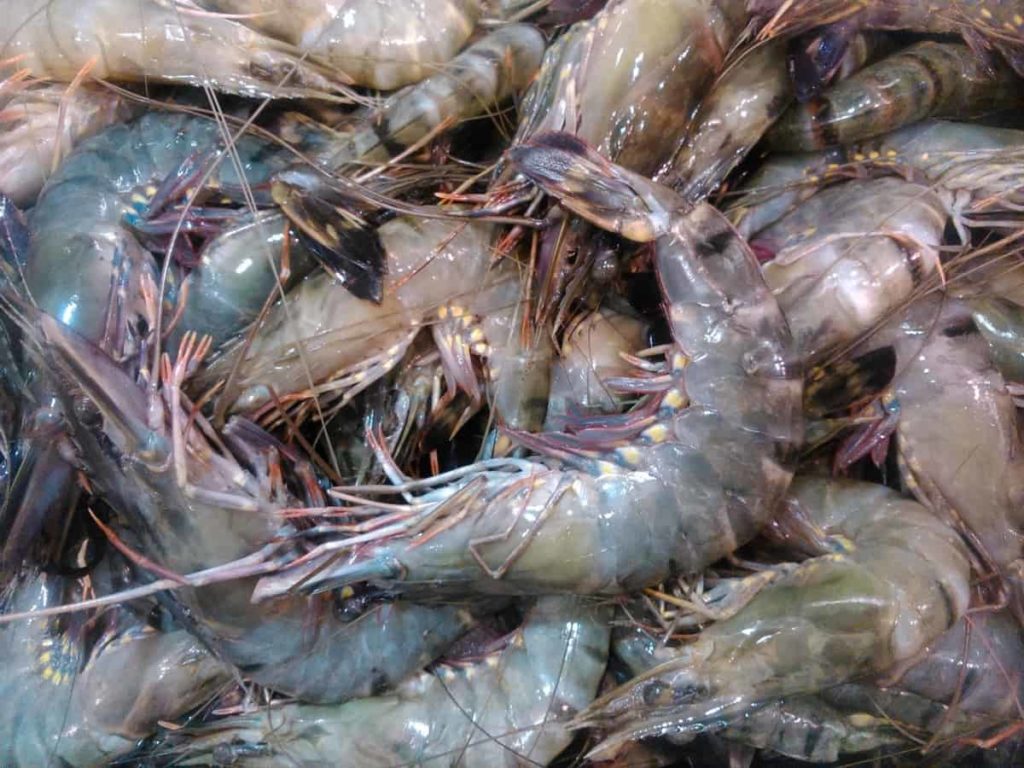
Common Shrimp/Prawn diseases, symptoms, treatment
What are the diseases of shrimp?
Shrimp diseases are the biggest concern of the shrimp farming industry. Many diseases cause greater economic loss in aquaculture.
White Spot Disease (WSD):
White spot syndrome is a viral infection in penaeid shrimp. This disease is highly lethal and contagious, killing shrimp very quickly. These disease outbreaks have wiped out the entire populations of many shrimp farms within days. White spot disease is a highly contagious viral infection that affects crustaceans, and the white spot syndrome virus causes this disease.
Heptopancreatic microsporidiosis (HPM):
Hepatopancreatic microsporidiosis is caused by Enterocytozoon hepatopenaei. This Microsporidian parasite affects black tiger shrimp. EHP has been widespread in almost all Southeast Asian countries, including India. Enterocytozoon hepatopenaei is a fungal parasite that infects the digestive system of tiger shrimp and whiteleg shrimp and results in slow growth and, in chronic infections, mortalities.
Early Mortality Syndrome (EMS):
Early Mortality Syndrome, also called Acute Hepatopancreatic Necrosis Disease, is a newly emerging disease in shrimp farming. It can potentially cause serious reductions in production and, consequently, financial losses to the shrimp aquaculture industry. Dead shrimp are found at the bottom of the ponds, and new shrimp die daily.
EMS is identified by high mortalities, with many cases reaching 100 percent within 30 days. Clinical signs of this disease include swimming near the bottom of the pond, reduced growth, whitening of the digestive gland, soft texture of the exoskeleton, and dark spots or streaks on the digestive gland.
In case you missed it: Common Fish Diseases, Symptoms, and Treatment: Check How this Guide Helps Fish Farmers
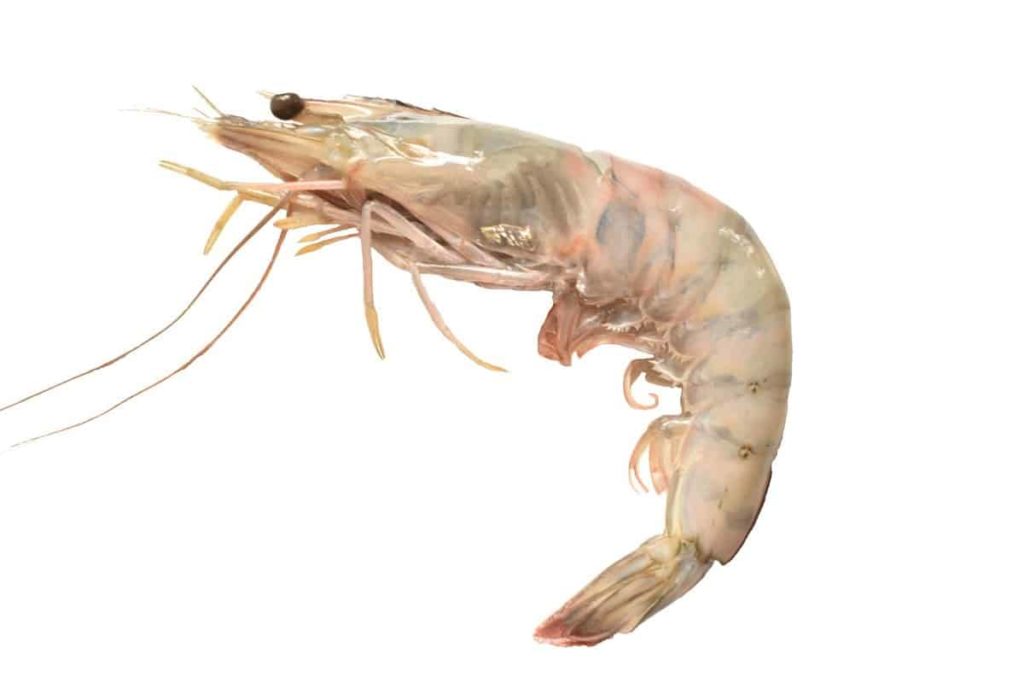
Luminous Vibriosis
Luminous vibriosis is a destructive infection of penaeid shrimp larvae and juveniles, causing heavy mortalities. Vibriosis is one of the most dangerous bacterial diseases in shrimp aquaculture and is caused by the infection of pathogenic and opportunistic Vibrio bacteria. Vibriosis is controlled by various water management systems and sanitation to prevent the entry of Vibrio into the culture water and to reduce stress on the shrimps. Good site selection for farm, pond design, and pond preparation is also important in preventing this disease.
Shell Disease
Shell Disease, also known as Brown or Black Spot Disease. This disease infection can be seen in shrimp from their larval stage up to adulthood. Loose-shell syndrome disease is a serious concern in penaeid shrimps, causing mass mortality. This infection occurs in adults, but juveniles are infected more frequently. There is no treatment available to control this disease. Shell disease can be managed in confined and cultured populations by reducing crowding, wound avoidance, proper husbandry, and system hygiene.
Filamentous Bacterial Disease
The affected shrimp larvae show gills, setae, appendages, and body surface fouling. The molting of affected shrimps is impaired, and they will die due to hypoxia. Leucothrix mucor called Filamentous bacteria is the causative agent for this disease. Diagnosis of filamentous bacterial disease will be identified based on gross signs and symptoms when observed in microscopic demonstrating bacterial fouling of the body surface and appendages of shrimp larvae.
Chronic Soft-Shell Syndrome:
Chronic soft-shell syndrome is one major problem affecting the production of tiger prawns in saltwater ponds. It is a shrimp disease in which the shell is persistently soft for some weeks. The soft-shell syndrome is caused due to nutritional deficiencies, stresses like exposure to chemical pesticides, poor pond water quality, and poor management practices in ponds. Lack of supplementary shrimp feeding in ponds is also a reason for loose shell syndrome.
Sudden climate changes and the aged ponds with high stocking densities in summer are prone to shell syndrome. The affected shrimp have a paper-like shell with a gap between muscle tissues. The affected shrimp lose weight, turning the shell into a soft leathery shell. A significant reduction in growth rate was observed due to this disease.
Black Gill Disease
The black Gill disease is one of the shrimps’ most common fungal diseases. Black gill is a parasitic infection disease affecting shrimp. This black gill syndrome is occurred due to Fusarium Solano. The presence of heavy metals such as copper and cadmium can result in the occurrence of this disease.
The immune system will be weakened by stress and the effect of these factors, so the disease happens. Due to melanization at tissue necrosis, there are multifocal black or brown spots in the gills or general discoloration. Gill melanization may be visible through the side of the carapace.
White tail disease
The white tail disease is a disease of the giant freshwater prawn Macrobrachium rosenbergii caused by Macrobrachium rosenbergii nodavirus and its associate extra small virus. This whitetail viral infection is generally considered a freshwater prawn disease and is responsible for severe mortalities. The clinical signs of this disease-infected prawn include lethargy and opaqueness of the abdominal muscle. The whitish muscle appearance gave the name to this disease.
In case you missed it: Best Practices to Grow Tamarind Trees: Check How this Guide Helps Beginners
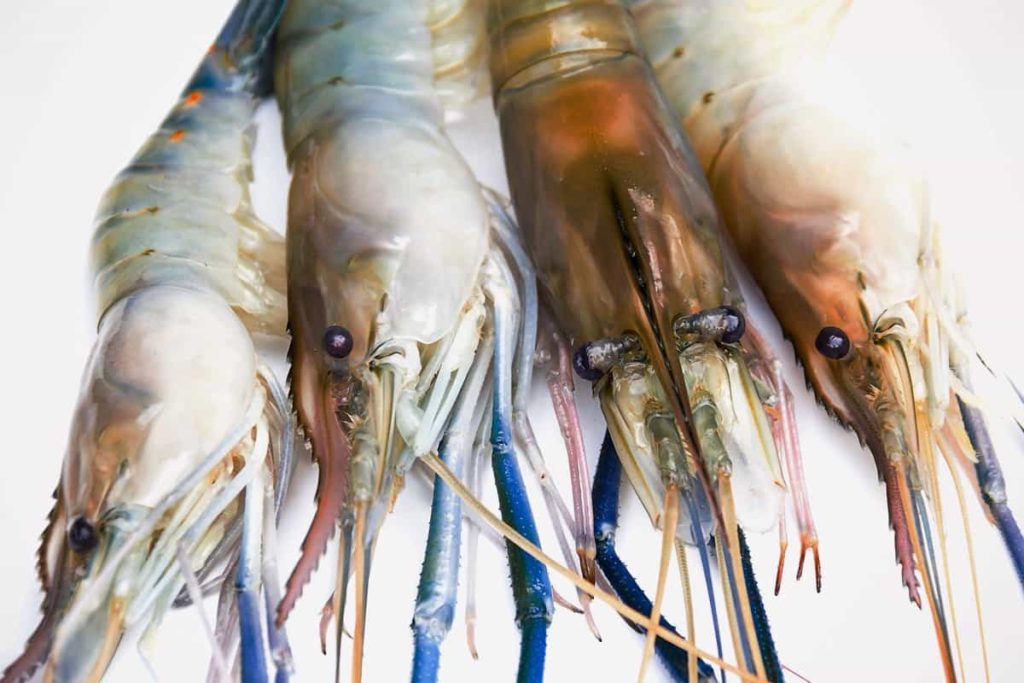
What is white spot disease in prawns?
White spot disease is a most contagious viral infection that affects prawns and crabs. White spot syndrome virus causes this disease. White spot disease results in rapid mortality in high-intensity production areas, such as prawn farms. Affected prawns may have loose shells, white spots on the shell’s inside surface, discolored pink-to-red, have unusual mortality, come to the edge or water surface, and demonstrate unusual swimming patterns.
How do you prevent shrimp disease?
The impact of shrimp diseases is controlled by increasing the level of key nutrients affecting the health and immunology of shrimp, including essential fatty acids, trace minerals and carotenoids, vitamins C and E, and phospholipids. These booster feeds are often supplemented with immunostimulants, mainly derived from the cell envelope of micro-organisms.
The transmission of diseases can be controlled by screening broodstock, avoiding rapid changes in water conditions, avoiding shrimp stress, and avoiding using fresh feeds. Minimizing water exchange to prevent virus carriers from entering the pond and treating infected ponds or hatcheries can also prevent the diseases from spreading further.
How do you prevent white spots on prawns?
White spot is a most contagious viral infection that affects all shrimp. The white spot syndrome virus causes the disease. White spot disease is widespread throughout prawn farming regions in Asia and the Americas, where it has caused severe losses on prawn farms. No treatment effectively works for the disease. Only use bait prawns bought from a quality bait supplier to prevent the disease when fishing or crabbing. The disease-infected ponds must be cleaned with chlorine and advised to stop production for at least one season to avoid this disease
How do you treat Vorticella in shrimp?
Vorticella, also known as Bell Animalcule, is the most common shrimp parasite. It is a turbellarian flatworm that typically lives in the mantle or gills of the shrimp and is visible as a series of fingerlike structures extending from the rostrum. This vorticella will produce a stalk and attach itself to a substrate, plant, shrimp, etc.
It has stalks that allow it to stick to the surfaces. Vorticella has dimensions that can reach 30-40 microns. It can survive in a wide range of water temperatures like 23-35°C, making it most adaptive for living in most aquariums. Aquarium salt treats shrimp parasites such as vorticella and Scutariella japonica.
Where do shrimp parasites come in shrimps?
Vorticella
Vorticella is one of the most commonly seen parasites in shrimp tanks. It looks like white mold on the shrimp’s body. Areas of fluffy white growth will also be seen on the shrimp head and at the tip of the nose. Because of its appearance, vorticella is generally mistaken as a fungus when they are better described as protozoa. Vorticella will attach to freshwater plants, algae, rocks, shells, or crustacean animals, such as shrimp. For shrimp, Vorticella can be deadly. If untreated, it could cause health problems and eventually lead to death.
In case you missed it: Common Sheep Diseases, Symptoms, and Treatment: Check How this Guide Helps Sheep Farmers
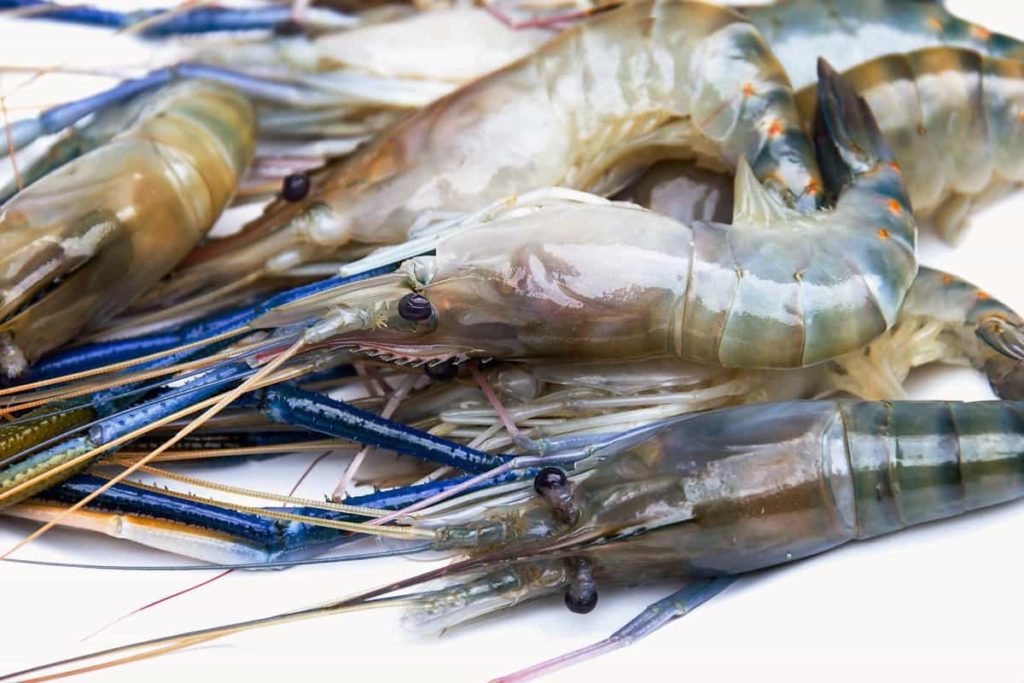
Scutariella Japonica
Scutariella Japonica is the most common shrimp parasite. A Scutariella Japonica is a flatworm type of parasitic nematode. It damages the shrimp’s gills and sometimes even leads to their death. The first symptom of an infection of a shrimp by Scutariella japonica is the appearance of a small white stick-like growth on top of a shrimp head. These parasites not only live on the heads of shrimp but also in their gills.
Holtodrilus Truncates
Holtodrilus truncates, also called shrimp worms, are small, worm-like obligate parasites of crustaceans, mainly seen in crayfish and shrimp. These parasites are a new threat in aquaculture ponds. Shrimp worms can affect shrimp wellbeing by causing distress, leading directly to shrimp weakness, loss of color, and even casualties.
What is black gill disease?
Black gill is a parasitic disease affecting shrimp. Black gill disease is due to chemical contaminants, heavy siltation, ammonia or nitrite in rearing water, and high organic load due to residual feed, debris, and fecal matter on the pond bottom. Environmental conditions, special bacteria, fungi attack, and nutritional deficiencies will weaken the shrimp’s immune system, resulting in the black Gill disease appearing. The gills of affected shrimps show brownish to black discoloration; in advanced cases, the gill will become black.
How do you control Vibrio vannamei?
Various water management systems and sanitation can control vibriosis. Good site selection, pond design, and pond preparation are also important to prevent the entry of Vibrio into the culture water and to reduce stress on the shrimps.
What is shrimp Vibrio?
Vibrios are a genus of bacteria in aquatic environments and are prevalent in shrimp ponds. This bacterial disease is caused by Vibrio, a Gram-negative, motile bacteria of the family Vibrionaceae. Vibriosis is one of the common diseases in finfish aquaculture, especially in shrimp farming. Vibriosis is a bacterial disease responsible for the mortality of cultured shrimp. Most of the Vibrio species are non-pathogenic and found in healthy shrimp.
What pathogen causes white spots?
The agent which causes white spot disease is the white spot syndrome virus. It is a large DNA virus assigned as the only member of the genus Whispovirus which belongs to the family Nimaviridae. The virus infects only crustacean shrimps and appears unrelated to other known viruses.
What are the safety precautions to avoid shrimp diseases in aquaculture?
Farm-level disease prevention measures include strict quarantine measures, egg disinfection, regular water treatments, clean feed, and disposal of mortalities away from the shrimp ponds. Increase waste discharge capacity to avoid water quality deterioration & add probiotics to the water to prevent the proliferation of pathogenic bacteria.
Improving waste degradation can also control the spreading of disease in culture ponds. Avoid overusing medications, as they may lead to hepatopancreatic damage. Finally, rather than trying to treat every disease case, it is better to follow preventive measures before the event of any disease transmission.
In case you missed it: Best Practices to Grow Taro Root at Home: Check How this Guide Helps Beginners
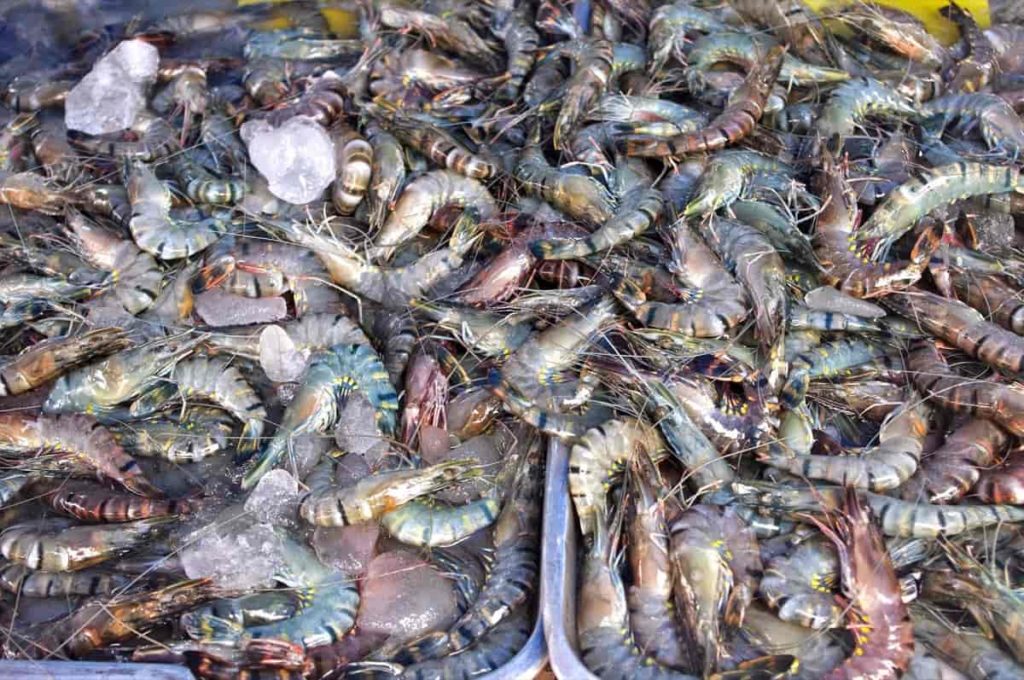
What causes muscle necrosis in shrimp?
Muscle necrosis disease is caused by numerous factors, most of which have their reason for an imbalance in the ecological system. Muscle necrosis in shrimp has occurred to temperature and sudden changes in salt percentage in water, low oxygen levels, overcrowding, rough handling, and severe gill fouling. Muscle necrosis in shrimp often produces opaque white lesions in the tail muscle. In the early stages of infection, the muscle tissue looks whiteish color, and as it progresses, this white solidifies. Shortly before the shrimp dies, its abdomen turns into massive ivory white.
What causes melanosis in shrimp?
Melanosis is the harmless but unappealing surface discoloration of shrimp. The enzymatic oxidation of colorless phenols causes them into quinones which undergo non-enzymatic polymerization generating dark insoluble pigments on shrimps. Melanosis will not impact the flavor of shrimp and not harm consumers. But, this discoloration can drastically affect consumer acceptability of the products and significantly decrease market value.
What is Monodon baculovirus?
Monodon baculovirus is one of the most reported viral pathogens of shrimp. It mainly affects the giant tiger prawn Penaeus monodon and other penaeid shrimps like Penaeus vannamei. Baculoviruses are rod-shaped, enveloped viruses with double-stranded DNA.
Affected shrimps exhibit pale-bluish to dark blue coloration, sluggish and inactive swimming movements, loss of appetite, and retarded growth. Increased growth of benthic diatoms and filamentous bacteria may cause fouling on the gills. Three viruses have been identified from penaeid shrimp, affecting the perigastric organ duct, tubule epithelium, and mid-gut.
What is the major viral infection in penaeid shrimp?
Viral infection of penaeid shrimp is highly lethal and contagious, killing shrimp quickly. Outbreaks of these diseases have wiped out the entire populations of many shrimp farms within days. Yellow Head Virus (YHV) Disease, Taura Syndrome Virus (TSV) Disease, and Infectious Myonecrosis Virus (IMNV) Disease are shrimp infections caused by viruses.
Yellow Head Virus (YHV) Disease
The yellow head disease is a viral infection of shrimp and prawns. Yellowhead is a positive-sense, single-stranded RNA virus. Yellow head virus (YHV) infects the black tiger shrimp, one of the world’s major aquaculture species. A virulent pathogen can cause mortality within a few days of a pond’s first signs of disease. The appearance of the disease and mortality often occur within two to four days.
Taura Syndrome Virus (TSV) Disease
Taura syndrome is a disease that mainly occurs in the nursery phase of Penaeus vannamei. It usually occurs within days of stocking post larvae into ponds and results in mortality rates of 90%. Taura Syndrome Virus (TSV) Disease will occur in post-larvae, juvenile, and adult life stages.
Taura syndrome is a disease of penaeid shrimp caused by infection with the Taura syndrome virus. It is a major disease of the white leg shrimp, Litopenaeus vannamei. Taura syndrome virus’s most susceptible species are the white leg shrimp Litopenaeus vannamei and the western blue shrimp Litopenaeus stylirostris.
Infectious Myonecrosis Virus (IMNV) Disease
Infectious myonecrosis is a viral disease seen in penaeid shrimp. It is caused by infection with infectious myonecrosis virus (IMNV). Shrimp in the acute phase of IMN disease will present focal to extensive white necrotic areas in skeletal muscles, especially in the distal abdominal segments and tail fan, which can become necrotic and reddened in some individual shrimp. The infection is identified by whitish muscles along the abdomen and tail region.
Severely affected prawns become moribund, and mortalities can be instantaneously high and continue for some days. No effective vaccines are available for this disease. Disinfection of eggs and larvae is a best management practice suggested to reduce the potential of infectious myonecrosis virus contamination of spawned eggs and larvae produced from them.
How can we control running mortality in vannamei?
Besides infectious diseases, Indian shrimp farming has witnessed some syndromes that affect productivity. One such syndrome that causes significant morbidity and mortality is running mortality syndrome. The affected shrimp show whitish in the abdominal segments as a clinical sign of continuous low-level mortalities, especially about 35–40 days after juvenile shrimps were released in the cultured ponds.
In the beginning days, farmers controlled this disease by regularly removing the dead shrimp from the culture pond and reducing the stocking density by partial harvesting, that reduced mortality. Reduced feed quantity or suspending feed for a few days can also reduce mortality.
How do you control the white spot in shrimp?
White spot disease is a highly contagious viral infection of decapod crustaceans that can cause high mortality levels in cultured shrimp. Transmission through infected brooders is also possible, wherein the virus is transmitted to larvae. Hence, PCR-tested seeds are always advisable only to be stocked in the ponds.
There is no treatment for the white spot syndrome virus. Prevention is the only way to avoid the disease from shrimp aquaculture farming. One such marine virus, the white spot syndrome virus, has emerged globally as one of the most frequent, widespread, and lethal for shrimp populations. Still, no treatment is available to interfere with this disease’s unrestrained occurrence and spread.
In case you missed it: Common Dairy Cattle Diseases, Symptoms, and Treatment: Check How this Guide Helps Dairy Farmers
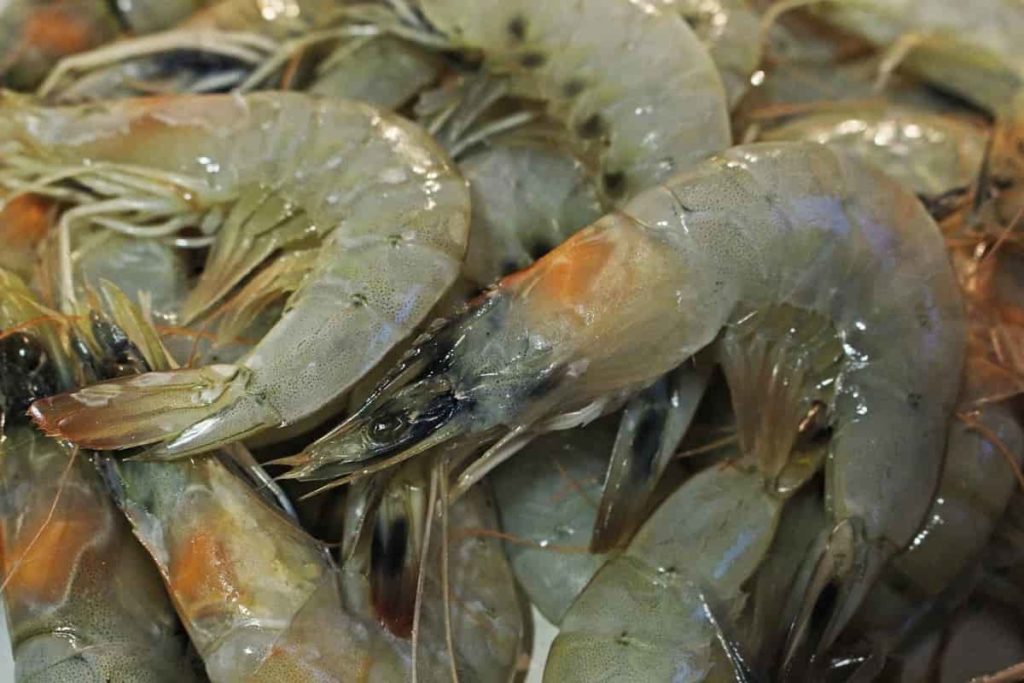
How do you control EHP in shrimp?
The pancreatic microsporidian Enterocytozoon hepatopenaei (EHP) is an emerging pathogen that affects cultured shrimp Penaeus vannamei and Penaeus monodon shrimp in several SE Asian countries. EHP, or Enterocytozoon hepatopenaei, is a fungal microsporidian parasite. It results in slow growth, chronic infections, and mortalities in shrimp culture ponds.
There is no drug for the control of EHP infection in shrimp. Hence, better management practices and proper biosecurity is the only way to keep away this parasite from the rearing ponds system.
Conclusion
Farm-level biosecurity measures include strict quarantine measures, egg disinfection, regular water treatments, clean feed, and disposal of mortalities away from the shrimp ponds. Finally, rather than trying to treat every disease case, it is better to follow preventive measures before the event of any disease transmission.
- Sheep Farming Business Plan for Beginners
- Aquaponic Farming at Home: A Step-By-Step Guide
- Profitable Village Farming Business Ideas in 2024
- High-Yield Aquaculture: Fast-Growing Fish for Farming
- Effective Fish Pond Construction Techniques for Beginners
- Irrigation and Water Management in Pineapple Farming
- Blossom to Harvest: Mastering Flowering and Pollination in Papaya Farming
- Pig Fattening Essentials: From Selection to Sale for Beginners
- Raising Wagyu Cattle: A Complete Guide for Premium Beef Production
- Soil Types and Their Water Holding Capacity
- Optimizing Irrigation Schedules for Coconut Groves for Enhanced Yield
- Espresso Your Garden: Coffee Grounds for Healthier Acid-Loving Plants
- The Best Soil Mix for Snake Plants: How to Mix Your Own Snake Plant Soil
- Green Thumb Success: Expert Tips for Cultivating Greenhouse Beans All Year Round
- Bloom All Year Round: The Ultimate Guide to Indoor Hyacinth Care
- Eco-Friendly Gardening: How to Make Liquid Fertilizer from Kitchen Waste
- Ultimate Guide to Grow Anise in Pots: Explore Seed Propagation to Harvesting
- Guide to Raising Chester White Pigs: Discover Breed Facts to Growth Management
- Mastering the Elegance: The Ultimate Guide to Weeping Cherry Tree Care, Planting, and Maintenance
- Ultimate Guide to Planting Garlic in Grow Bags: Growing Strategies for Beginners
- How to Fix Spider Plant Leaf-Related Problems: Natural and Organic Remedies
- 10 Reasons Why Your Tulsi Plant is Shedding Leaves: Home Remedies and Solutions
- Optimizing Growth and Yield: The Advantages of Palm Bunch Ash Fertilizer
- Utilizing Neem Oil Extract as a Natural Pesticide for Hydrangea
- From Soil to Harvest: Various Ways in Which Farmers Can Use AI Tools
- Steps to Encourage and Induce Citrus Flowers: A Comprehensive Guide
- How to Fix Snake Plant Leaf-Related Issues: Natural and Organic Remedies
- Transform Your Garden into a Fragrant Oasis with Raat Ki Rani (Night Blooming Jasmine)
- Discover the Ideal Chicken Breeds for Philippine Farms
- How to Create a Poultry Egg Farm Business Plan for Profits
- Grow Lemon Cucumbers Like a Pro: Insider Techniques for Bountiful Yields
- Ultimate Guide to Caring for Your Pink Princess Philodendron: Tips for Thriving Variegation
- Areca Nut Profit Per Acre: Calculating Yield and Cost of Cultivation
- How Kaveri Chicken is Becoming a More Profitable Breed in Indian Backyards
- Transform Your Barn: 9 Steps to Convert a Horse Stall into a Chicken Coop
- Exploring Suffolk Sheep Disadvantages with Limitations and Challenges
